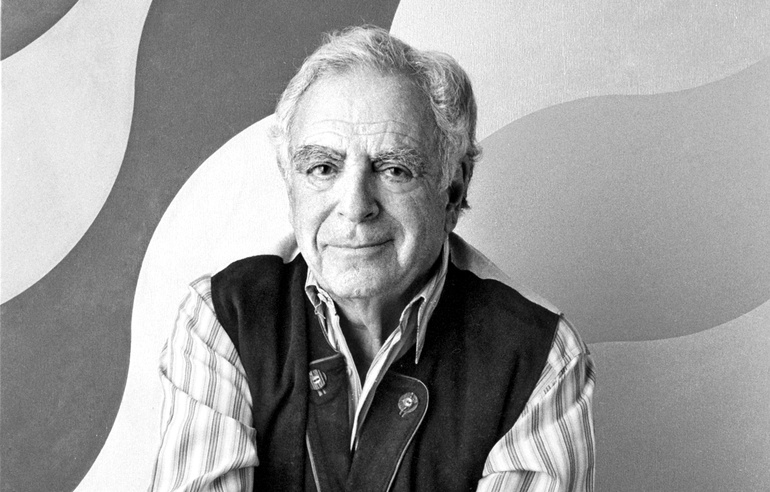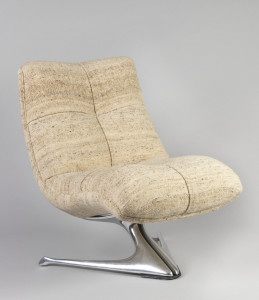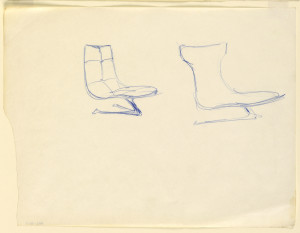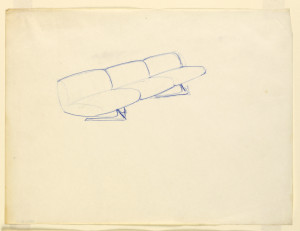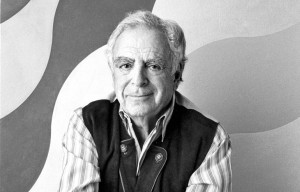
Courtesy of Vladimir Kagan Studio.
Cooper Hewitt mourns the loss of Vladimir Kagan, whose life-embracing style was like that of his furniture. Most examples contain the sensuous and organic forms that reflected his personality, he rephrased his work from the late 1940s to a large outburst of productivity in the 1960s and 70s to a revival of his popularity in the 2000s. He occasionally created a piece to showcase the needlework designs of his late wife Erica Wilson. A man who understood materials, especially the woods he often used, Vladi, as he liked to be called, worked with his master craftsman father in Germany before emigrating to the United States. He made seduction by form with an elegance that was at home on Park Avenue and in Malibu alike.
His furniture and design drawings at Cooper Hewitt speak to this style. Mixing a modern aesthetic with craft practice, the furniture he produced at mid-century displayed a fluid, sculptural quality. His curvaceous Unicorn chair (pictured above) of about 1960 speaks of soft comfort, its reclining form finished in deep, tufted, textured upholstery mounted on an angled V-shaped aluminum pedestal base that he said was inspired by a Brancusi sculpture, Bird in Flight, he had seen at a museum. His ca. 1976 Cubo armchair was inspired by a more classic modernism. A box-like form on a stainless steel base, Kagan softened its pure geometry by using channeled leather upholstery that seems to enfold the sitter. Versatility and a concern for comfort remained dominant factors in his work throughout his career.
Research assistance provided by Associate Curator Cynthia Trope.
